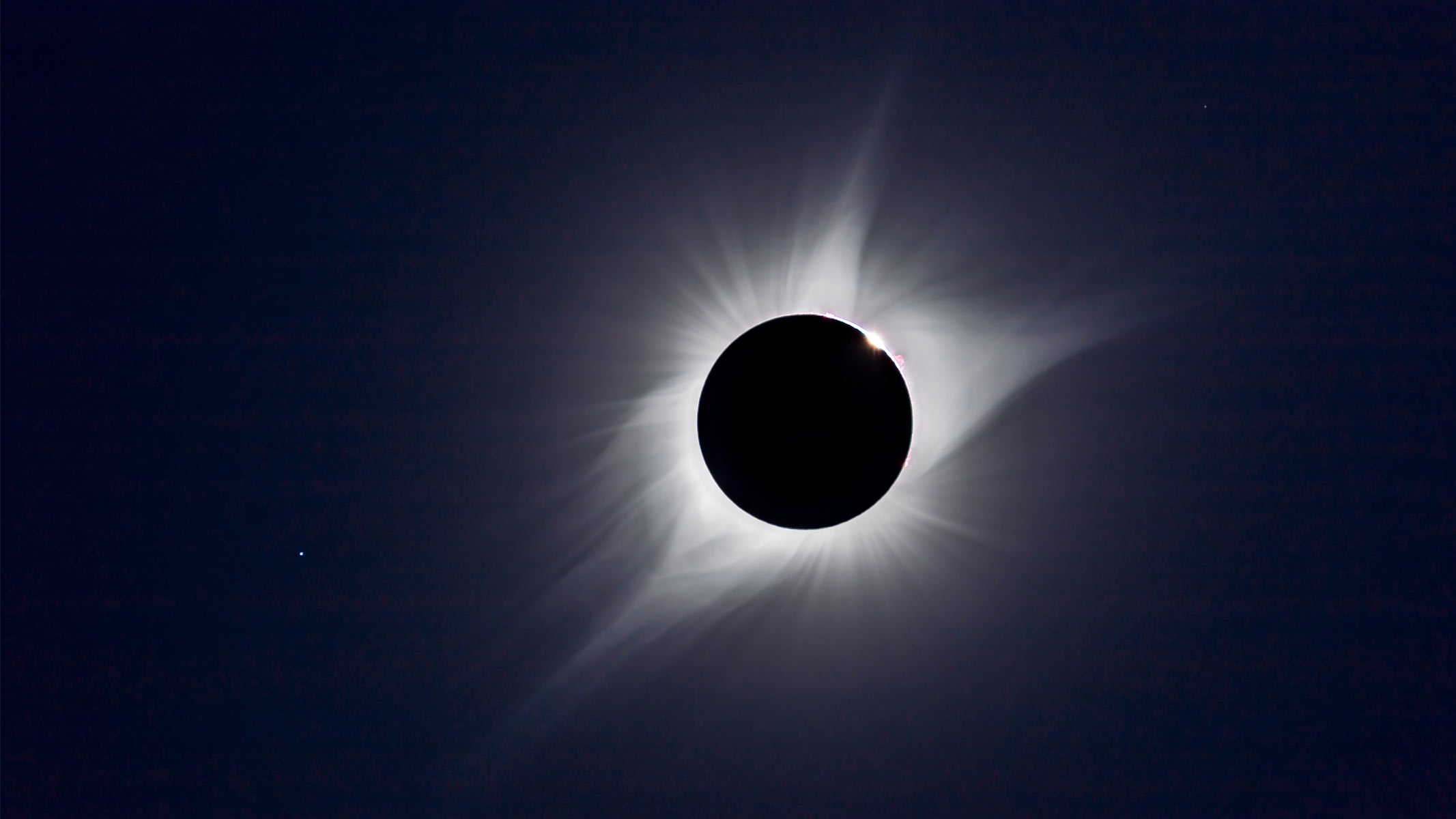4 key things NASA just revealed about the interstellar comet 3I/ATLAS
"This is a snapshot of where we are very early in the scientific process."

Since the interstellar comet 3I/ATLAS was discovered this past July — just the third confirmed object to arrive from another star — astronomers have been closely following its passage through our solar system.
As the icy visitor brightened on its coast toward the sun, the public narrative brightened too, with online rumors casting it as a possible alien spacecraft during the recent 43-day-long government shutdown when NASA could not comment on the object or release new images. Last week, with the shutdown over, NASA held a long-awaited briefing in which it shared observations and early analysis from more than 20 missions across the solar system, assembling the most complete picture yet of this rare visitor — and made one point immediately clear: 3I/ATLAS is of natural origin, not an example of alien technology.
"We very much want to find signs of life in the universe," NASA Associate Administrator Amit Kshatriya said during the briefing. "But 3I/ATLAS is a comet."
Discovered on July 1 by the NASA-funded ATLAS telescope in Chile, 3I/ATLAS offers a rare chance to study material forged around another star, scientists say. Early findings suggest the object is carrying chemical clues from a distant, unknown planetary system that's likely older than our own.
Here are four key things the agency revealed about the interstellar visitor.
1) 'This object is a comet'
In July, about two weeks after 3I/ATLAS was discovered, a trio of researchers, including Harvard astrophysicist Avi Loeb, posted a non-peer-reviewed preprint arguing that the comet's characteristics hint at disguised, possibly hostile alien technology. The claim echoed earlier speculation made about the first-known interstellar object, 'Oumuamua, and quickly gained traction online.
It picked up further momentum after SpaceX CEO Elon Musk suggested on a podcast that something beyond gravity could be influencing the comet's motion, and by Kim Kardashian's viral request on X asking NASA Acting Administrator Sean Duffy to spill the "tea" on the object.
Breaking space news, the latest updates on rocket launches, skywatching events and more!
During last week's NASA briefing, Kshatriya wasted no time addressing the speculation. "This object is a comet," he said at the outset. "It looks and behaves like a comet, and all evidence points to it being a comet."
Nicky Fox, the associate administrator of NASA's Science Mission Directorate, added that none of NASA's observations show any technosignatures "or anything from it that would lead us to believe it was anything other than a comet."
She also stressed that scientists are confident 3I/ATLAS poses no threat to Earth, as it will come no closer than 170 million miles (270 million kilometers) to our planet. It will also not come close to any other planets during its passage, including when it passes the orbit of Jupiter in Spring 2026. The objects in our solar system, Fox said, "will be just fine."
2) A solar system-wide watchtower
From the moment of its discovery, scientists knew from 3I/ATLAS' trajectory that it sat on the opposite side of the sun from Earth, making ground-based observations difficult. To compensate, NASA convened a coordinated planning session in August, bringing together teams from more than 20 missions to mount a fleet-wide campaign to track the interstellar comet. In the end, dozens of spacecraft from Earth orbit to Mars and beyond worked in concert, each with a different vantage point.
Tom Statler, the lead scientist at NASA for solar system small bodies, likened the effort to watching a baseball game from different seats around the stadium, with both flagship telescopes and smaller spacecraft trying to follow the same fast-moving target.
"Everybody has got a camera and they're trying to get a picture of the ball," he said. "Nobody has the perfect view, and everybody has a different camera."
Mars happened to be on the favorable side of the sun. In early October, NASA's Mars Reconnaissance Orbiter captured images of 3I/ATLAS as a fuzzy white ball, revealing its dust-and-ice coma, from about 90 million miles (145 million km) away. Around the same time, the MAVEN orbiter detected the comet from 20 million miles (32 million km) through ultraviolet "science wiggles" that picked up signatures of hydrogen gas released as sunlight vaporized the comet's water ice, said Statler. Combined with data from the Swift telescope and the James Webb Space Telescope (JWST), scientists were able to estimate the comet's water production rate, a key clue to its formation history.
Other spacecraft offered snapshots from farther out. In September, NASA's Psyche asteroid mission imaged the comet as a faint blob from 33 million miles (53 million km) away. A week later, the Lucy mission, en route to study Jupiter's Trojan asteroids, observed the coma and tail from the opposite direction, helping researchers reconstruct the 3D structure of the dust. Even the NASA-European Space Agency SOHO (Solar and Heliospheric Observatory), managed to detect the faint object in mid-October despite expectations that it would be too dim to register, scientists shared during the briefing.
Additional assets contributed further pieces of the puzzle. The Hubble Space Telescope, shortly after its 35th anniversary earlier this year, observed the comet from 277 million miles (446 million km) away, revealing a pear-shaped coma and narrowing the possible size of the nucleus to between 1,400 feet (427 meters) and 3.5 miles (5.6 km). JWST provided the first infrared look at an interstellar object since its launch, detecting an unusually high ratio of carbon dioxide to water ice, well above what's typical for comets born in our own solar system. That information suggests that 3I/ATLAS's ices may have been shaped by harsher radiation environments around an older star, scientists said.
"This is a snapshot of where we are very early in the scientific process," Statler said.

3) A rare window into distant, older star systems
Scientists say that 3I/ATLAS has likely been traveling through interstellar space for a long time. Based on how fast it was moving upon entering the solar system, Statler said the circumstantial evidence points to the comet originating in a very old planetary system, possibly one older than our own.
That "gives me goosebumps to think about, frankly," he said, noting that 3I/ATLAS may reveal insights into cosmic history that predates the formation of both Earth and the sun.
"It is a new window into the makeups and histories of other solar systems," he said.
4) Intriguing chemical clues
So far, 3I/ATLAS has behaved exactly as a comet should as it warms near the sun, shedding water and carbon dioxide, but with some intriguing twists. Scientists have detected a higher-than-usual ratio of carbon dioxide to water compared with typical solar system comets, as well as gas unusually rich in nickel relative to iron. Both findings are scientifically compelling and worth further investigation, researchers said.
The dust around the comet also shows slightly atypical properties, suggesting its grain sizes differ from those of local comets. One especially curious behavior was the dust was initially blown toward the sunward side before solar radiation gradually pushed it back, a longer and less common sequence than scientists usually observe in homegrown comets.
"We're still learning even about what questions we still need to ask," said Statler. "And this, of course, is the scientific process in action."

Sharmila Kuthunur is an independent space journalist based in Bengaluru, India. Her work has also appeared in Scientific American, Science, Astronomy and Live Science, among other publications. She holds a master's degree in journalism from Northeastern University in Boston.
You must confirm your public display name before commenting
Please logout and then login again, you will then be prompted to enter your display name.
